#Saint John Maximovitch
Explore tagged Tumblr posts
Text
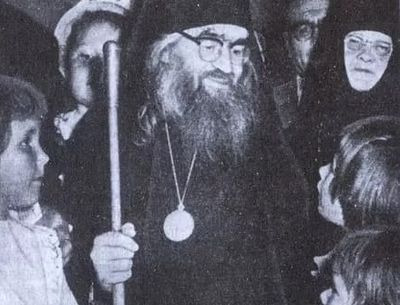
If you ask anyone who knew Archbishop John (Saint John Maximovitch) what it was that drew people to him - and still draws people who never knew him -- the answer is always the same: he was overflowing with love; he sacrificed himself for his fellow men out of absolute love for God and for them. This is why things were revealed to him which could not get through to other people and which he never could have known by natural means. he himself taught that, for all the mysticism' of our Orthodox Church that is found in the Lives of Saints and the writings of the Holy Fathers, the truly Orthodox person always has both feet firmly on the ground, facing whatever situation is right in front of him. It is in accepting given situations, which requires a loving heart, that one encounters god. This loving heart is why anyone comes to a knowledge of the truth, even though God sometimes has to break down and humble a heart to make it receptive -- as in the case of the Apostle Paul, who at one time was breathing fire against and persecuting Christians. but to God, the past, present and future of the human heart are all present, and He sees where He can break through and communicate.
-- God's Revelation to the Human Heart by Father Seraphim Rose
17 notes
·
View notes
Text

"Even as Archbishop, St John (Maximovitch) of Shanghai and San Francisco (June 19/ July 2) lived in poverty, wearing a cassock was made of Chinese "peasant cloth" stitched with crosses by orphans once in his care. His "miter" was sometimes a cloth cap to which he had glued paper icons. He went barefoot in all seasons, even in the United States-- until, after a foot infection, his Metropolitan ordered him to wear shoes. St John chose sandals.
At his funeral, the eulogist declared that because Archbishop John was able to live the spirituality of the Orthodox Church so fully, even in modern, western, urban society, so should we-- without excuse."
~Via Orthodox Christian on facebook
#saints#Orthodox Christian#St. John Maximovitch#St. John of Shanghai and San Francisco#poverty#humility#live the Orthodox spirituality fully in western society#no excuses#Christian art
13 notes
·
View notes
Text
I listened to the audiobook of this on the drive home yesterday. Very interesting, short, little book. It's just a simple presentation of the history of the veneration of Mary from an EO perspective.
3 notes
·
View notes
Text
ST. JOHN OF SHANGHAI AND SAN FRANCISCO THE WONDERWORKER (1966)
june 16_june 29 2024
Commemorated on the Saturday closest to June 19th (ROCOR), June 19th (MP)
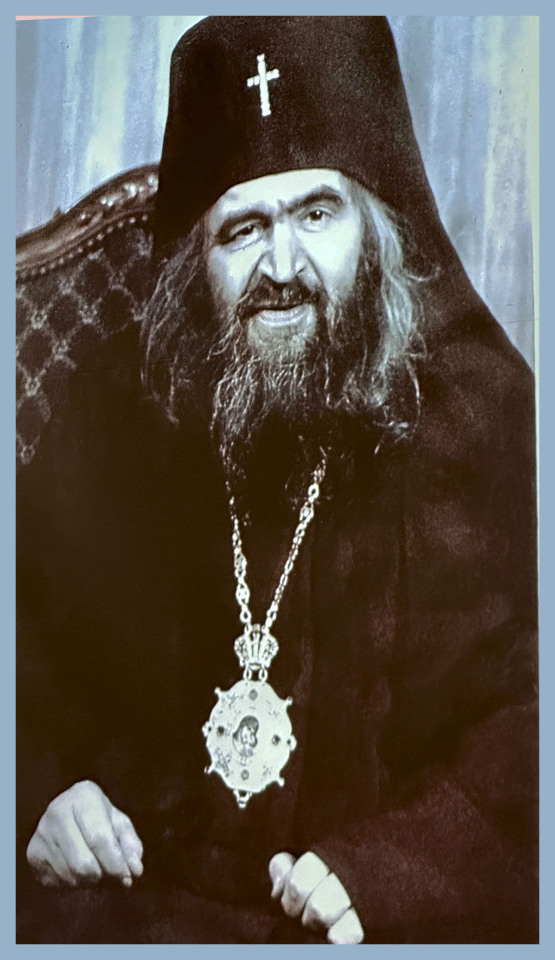
On this date 30 years ago, ROCOR celebrated the glorification of St John of Shangaï and San Francisco at the Holy Virgin Cathedral, also known as Joy of All Sorrows, the Church St John built in San Francisco. This event occurred after his relics, located in the cathedral crypt under the main altar, were uncovered incorrupted on October 12, 1993.
The future St. John was born on June 4, 1896, in the southern Russian village (current day Ukraine) of Adamovka in Kharkiv province to pious aristocrats, Boris and Glafira Maximovitch. He was given the baptismal name of Michael, after the Holy Archangel Michael. In his youth, Michael was sickly and had a poor appetite, but he displayed an intense religious interest. He was educated at the Poltava Military School (1907-14), Kharkiv Imperial University, from which he received a law degree (in 1918), and the University of Belgrade (where he completed his theological education in 1925).
He and his family fled their country as the Bolshevik revolutionaries descended on the country, emigrating to Yugoslavia. There, he enrolled in the Department of Theology of the University of Belgrade. He was tonsured a monk in 1926 by Metropolitan Anthony (Khrapovitsky) of Kharkov (later the first primate of the Russian Orthodox Church Outside of Russia). Metr. Anthony later in 1926 ordained him hierodeacon. Bishop Gabriel of Chelyabinsk ordained him hieromonk on November 21, 1926. Subsequent to his ordination he began an active life of teaching in a Serbian high school and serving, at the request of local Greeks and Macedonians, in the Greek language. With the growth of his popularity, the bishops of the Russian Church Aboard resolved to elevate him to the episcopate.
Hieromonk John was consecrated bishop on May 28, 1934, with Metr. Anthony serving as principal consecrator, after which he was assigned to the Diocese of Shanghai. Twelve years later he was named Archbishop of China. Upon his arrival in Shanghai, Bp. John began working to restore unity among the various Orthodox nationalities. In time, he worked to build a large cathedral church that was dedicated to Surety of Sinners Icon to the Mother of God, with a bell tower and large parish house. Additionally, he inspired many activities: building of churches, hospitals, and orphanages among the Orthodox and Russians of Shanghai. He was intensely active, constantly praying and serving the daily cycle of services, while also visiting the sick with the Holy Gifts. He often would walk barefooted even in the coldest days. Yet to avoid the appearance of secular glory, he would pretend to act the fool.
With the end of World War II and the coming to power of the Communists in China, Bp. John led the exodus of his community from Shanghai in 1949. Initially, he helped some 5,000 refugees to a camp on the island of Tubabao in the Philippines, while he travelled successfully to Washington, D.C., to lobby to amending the law to allow these refugees to enter the United States. It was while on this trip that Bp. John took time to establish a parish in Washington dedicated to St. John the Forerunner.
In 1951, Abp. John was assigned to the Archdiocese of Western Europe with his cathedra in Paris. During his time there, he also served as archpastor of the Orthodox Church of France, whose restored Gallican liturgy he studied and then celebrated. He was the principal consecrator of the Orthodox Church of France's first modern bishop, Jean-Nectaire (Kovalevsky) of Saint-Denis, and ordained to the priesthood the man who would become its second bishop, Germain (Bertrand-Hardy) of Saint-Denis.
In 1962, Abp. John was assigned to the Diocese of San Francisco, succeeding his long time friend Abp. Tikhon. Abp. John's days in San Francisco were to prove sorrowful as he attempted to heal the great disunity in his community. He was able to bring peace such that the new cathedral, dedicated to the Joy of all Who Sorrow Icon of the Mother of God, was completed.
Deeply revering St. John of Kronstadt, Abp. John played an active role in preparation of his canonization.
He reposed during a visit to Seattle on July 2, 1966, while accompanying a tour of the Kursk-Root Icon of the Mother of God.
Source: Holy virgin Cathedral of San Francisco
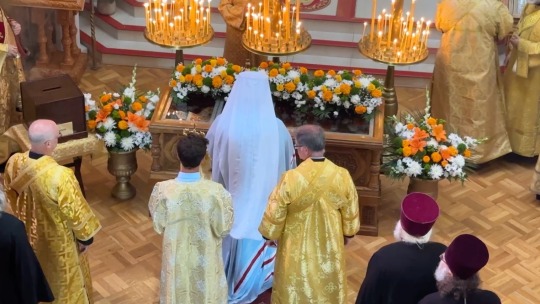
His Eminence, Metropolitan Nicola, First Hierarch of the Russian Orthodox Church Outside of Russia ( ROCOR), venerated St John's relics upon his arrival.

Metropolitan Nicolas, guardian since (13 years) of the Kurk-Roots wonderworking came with him for the celebration.
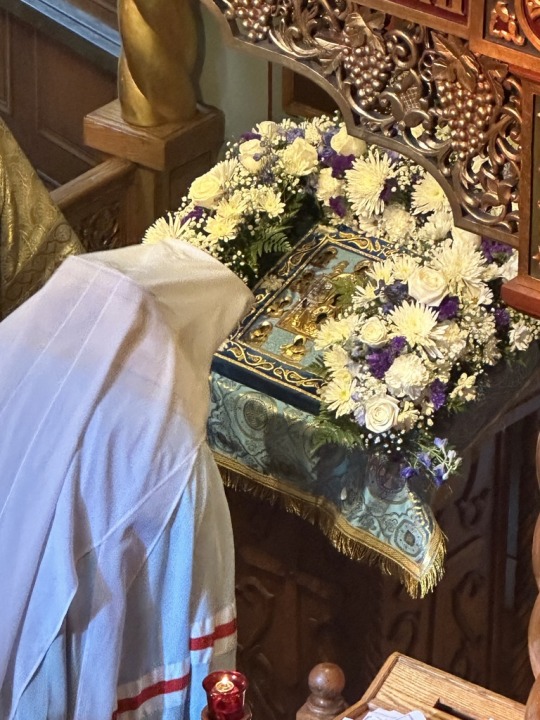
For all to venerate, the icon was then placed in the shrine where St John's relics usually reposed.
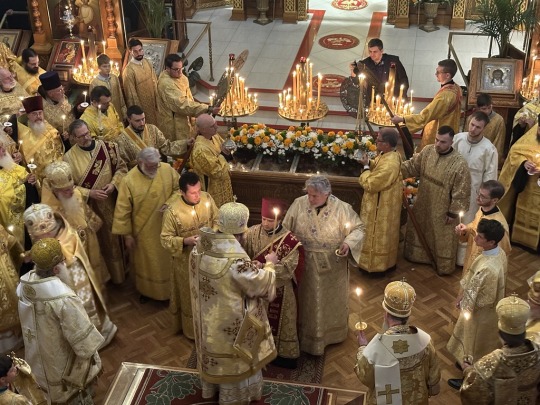
In front of St Joh's relics the Metropolitan and seven hierarchs of the Russian Church Abroad were gathered.
#orthodoxy#stjohnofsjshangaiandsanfrancisco#saint#orthodox feast#orthodoxchristianity#faith#spirituality#sanfrancisco#icon#sacredart
2 notes
·
View notes
Text
Prayer to Saint Thurgood Marshall:
Eternal and ever-gracious God, who didst bless thy servant Thurgood Marshall with exceptional grace and courage to discern and speak the truth: Grant that, following his example, we may know thee and recognize that we are all thy children, brothers and sisters of Jesus Christ, who teacheth us to love one another; and who liveth and reigneth with thee and the Holy Spirit, One God for ever and ever. Amen. + Lord Yeshua the Messiah, Son of the Living Allah, through the most powerful prayers of your most Holy Mother the Theotokos & Saints Thurgood Marshall, Pauli Murray, Florence Li Tim-Oi, Barbara Clementine Harris the Bishop, Maria Skobtsova the New Martyr of Paris, Sophrony Sakharov of Essex, John Maximovitch the Wonderworker of Shanghai and San Francisco, Maxim Sandovich of Gorlice, John the Theologian, Pulcheria the Byzantine Empress, Holy Byzantine Emperor John III Doukas Vatatzes, Seraphim Moshnin of Sarov, Pachomius the Great, Holy Coptic Orthodox Abbess Mother Tamav Irene (Irini), Philopater Mercurius (Abu-Saifain) the Great Martyr of Caesarea in Cappadocia, Nino of Georgia, Nicholas of Myra, Samaan Shehata the New Martyr of Egypt, Philip II the Metropolitan & Hieromartyr of Moscow, Silouan Antonov the Athonite, Porphyrios Bairaktaris of Kafsokalivia, Paisios Eznepidis of Mount Athos, Holy Righteous Prophet-King David, Jonathan, Queen Esther the Righteous, Mordecai the Righteous, Judith Conqueror of Holofernes, Holy Righteous Deborah the Judge, Jael, Holy Righteous Ruth, Holy Righteous Ruth, Thea Bowman, Iakovos Koukouzis of America, Alexander Schmemann, Kallistos Ware of Diokleia, Gabriel Urgebadze, Panteleimon the Unmercenary Healer, Dymphna of Gheel, Apollonia, Antipas of Pergamum, Menas the Great Martyr of Egypt, Olga Michael of Alaska, and Archangel Raphael, have mercy on us sinners. +
Dios eterno y siempre misericordioso, que bendijiste a tu siervo Thurgood Marshall con gracia y coraje para discernir y decir la verdad: concédenos que, siguiendo su ejemplo, podamos conocerte y reconocer que todos somos tus hijos, hermanos y hermanas de Jesucristo, que vive y reina contigo y el Espíritu Santo, un solo Dios, por los siglos de los siglos. Amén. + San Thurgood Marshall y Santa Maria Skobtsova la Martira Nueva de Paris, ruega por nosotros siempre. + Panginoong Hesukristo, Anak ng Diyos, maawâ po Kayò sa amin. +
0 notes
Photo

The closer we approach God, the closer we approach each other, just as the closer rays of light are to each other, the closer they are to the Sun. In the coming Kingdom of God there will be unity, mutual love and concord +Saint John Maximovitch
#eastern orthodoxy#Saint John Maximovitch#Saint John of Shanghai and San Francisco#my spiritual great-great-grandfather#christianity#Orthodoxy
9 notes
·
View notes
Photo

Today we celebrate the memory of the Holy Hierarch John Maximovitch the Wonderworker, Archbishop of Shanghai and San Fransisco (+1966). Saint John was a recent Russian Saint who through his humility, love and foolishness for Christ, was able to attain the state of sainthood in these latter times. He was also one of the main catalysts in establishing the Western Rite Orthodox Church in the United States of America. May he intercede for us all + #saint #john #saintjohn #maximovitch #archbishop #johnmaximovitch #shanghai #china #sanfransisco #usa #america #love #humility #fool #foolforchrist #christ #jesus #jesuschrist #orthodox #saintoftheday (at San Francisco, California) https://www.instagram.com/p/CQzHdcbLCbs/?utm_medium=tumblr
#saint#john#saintjohn#maximovitch#archbishop#johnmaximovitch#shanghai#china#sanfransisco#usa#america#love#humility#fool#foolforchrist#christ#jesus#jesuschrist#orthodox#saintoftheday
19 notes
·
View notes
Photo

Learn more about how you can help at
www.orthodoxafrica.org
Please reblog from our page.
#john maximovitch#saints#church fathers#orthodoxafrica#orthodox#orthodox church#eastern orthodox#easternorthodox#christian#clean memes#originalchristianfaith#christian memes
2 notes
·
View notes
Text
Divinum Pacis’s Reference Guide- 2022 Edition
Let’s face it, schooling is expensive, and you can’t cram everything you want to know into 4+ years. It takes a lifetime (and then some). So if you’re like me and want to learn more, here’s an organized list of some books I find particularly insightful and enjoyable.
The copyright year is now provided, and NEW ADDITIONS are listed first under their respective sections, with an asterisk (*). Some books appear in more than one section. If you have any recommendations, send them in!
African (various) 🌍
(*) A Womanist Theology of Worship: Liturgy, Justice, and Communal Righteousness by Lisa Allen (2021)
(*) True to Our Native Land: An African American New Testament Commentary by Brian K. Blount, Cain Hope Felder, Clarice J. Martin, & Emerson B. Powery. (2007)
(*) Africa Study Bible, NLT (New Language Translation) by Oasis International. (2017)
(*) De New Testament: The New Testament in Gullah Sea Island Creole by the American Bible Society (2005)
African Myths & Tales: Epic Tales by Dr. Kwadwo Osei-Nyame Jnr (2019)
The Egyptian Book of the Dead by E.A. Wallis Budge (2021)
Prayer in the Religious Traditions of Africa by Aylward Shorter (1975)
The Holy Piby: The Black Man’s Bible by Shepherd Robert Athlyi Rogers (2011)
The Altar of My Soul: The Living Traditions of Santeria by Marta Moreno Vega (2001)
African Religions: A Very Short Introduction by Jacob K. Olupona (2014)
Buddhism ☸
The Heart of the Buddha's Teaching: Transforming Suffering into Peace, Joy, and Liberation by Thich Nhat Hanh (1999)
The Dhammapada by Eknath Easwaran (2019)
Liquid Life: Abortion and Buddhism in Japan by William R. LaFleur (1994)
The Tibetan Book of the Dead by John Baldock (2017)
Teachings of the Buddha by Jack Kornfield (1996)
Understanding Buddhism by Perry Schmidt-Leukel (2006)
Essential Tibetan Buddhism by Robert Thurman (1996)
Christianity ✝️
(*) Welcoming and Affirming: A Guide to Supporting and Working with LGBTQ+ Christian Youth by Leigh Finke (2020)
(*) The Fundamentalist Takeover in the Southern Baptist Convention by Rob James & Gary Leazer (1999)
(*) The Human Icon: A Comparative Study of Hindu and Orthodox Christian Beliefs by Christine Mangala Frost (2017)
(*) The Complete Guide to Christian Denominations: Understanding the History, Beliefs, and Differences by Ron Rhodes (2015)
(*) Introduction to the Hebrew Bible: Third Edition by John J. Collins (2018)
(*) The Jewish Annotated New Testament, 2nd ed. by Amy Jill Levine (2017)
(*) Welcome to the Orthodox Church: An Introduction to Eastern Christianity by Frederica Mathewes-Green (2015)
(*) A Womanist Theology of Worship: Liturgy, Justice, and Communal Righteousness by Lisa Allen (2021)
(*) True to Our Native Land: An African American New Testament Commentary by Brian K. Blount, Cain Hope Felder, Clarice J. Martin, & Emerson B. Powery. (2007)
(*) Africa Study Bible, NLT (New Language Translation) by Oasis International. (2017)
(*) De New Testament: The New Testament in Gullah Sea Island Creole by the American Bible Society (2005)
The Story of Christianity Volume 1: The Early Church to the Dawn of the Reformation by Justo L. Gonzales (2010)
The Story of Christianity Volume 2: The Reformation to Present Day by Justo L. Gonzales (2010)
By Heart: Conversations with Martin Luther's Small Catechism by R. Guy Erwin, etc. (2017)
Roman Catholics and Shi’i Muslims: Prayer, Passion, and Politics by James A. Bill (2002)
Introducing the New Testament by Mark Allen Powell (2018)
Who’s Who in the Bible by Jean-Pierre Isbouts (2013)
Behold Your Mother by Tim Staples (2014)
Mother of God: A History of the Virgin Mary by Miri Rubin (2009)
Orthodox Dogmatic Theology by Fr. Michael Romazansky (2009)
Diary of Saint Maria Faustina Kowalska (2016)
The Names of God by George W. Knight (2009)
The Orthodox Veneration of the Mother of God by St. John Maximovitch (2012)
East Asian Religions ☯️
Shinto: A History by Helen Hardacre (2016)
Tao Te Ching, the New Illustrated Edition by Chad Hansen (2017)
The Analects by Confucius, Chartwell Books publishing (2016)
Tao Te Ching by Stephen Mitchell (2006)
Understanding Chinese Religions by Joachim Gentz (2013)
Taoism: An Essential Guide by Eva Wong (1997)
European (various)
(*) A Treasury of Irish Fairy and Folk Tales by Barnes & Noble (2015)
Iliad & Odyssey by Homer, Samuel Butler, et al. (2020)
Tales of King Arthur & The Knights of the Round Table by Thomas Malory, Aubrey Beardsley, et al. (2017)
Early Irish Myths and Sagas by Jeffrey Gantz (1981)
The Prose Edda: Norse Mythology by Snorri Sturluson and Jesse L. Byock (2005)
Mythology by Edith Hamilton (1969)
The Nature of the Gods by Cicero (1972)
Dictionary of Mythology by Bergen Evans (1970)
Gnosticism, Mysticism, & Esotericism
The Gnostic Gospels: Including the Gospel of Thomas, the Gospel of Mary Magdalene (Sacred Texts) by Alan Jacobs and Vrej Nersessian (2016)
The Kybalion by the Three Initiates (Hermeticism) (2008)
The Freemasons: The Ancient Brotherhood Revealed by Michael Johnstone (2018)
Alchemy & Mysticism by Alexander Roob (2018)
The Gnostics: Myth, Ritual, and Diversity in Early Christianity by David Brakke (2012)
What Is Gnosticism? Revised Edition by Karen L. King (2005)
The Essence of the Gnostics by Bernard Simon (2016)
The Essential Mystics: Selections from the World’s Great Wisdom Traditions by Andrew Harvey (1996)
The Secret Teachings of All Ages by Manly P. Hall (2003)
Hinduism 🕉
(*) The Human Icon: A Comparative Study of Hindu and Orthodox Christian Beliefs by Christine Mangala Frost (2017)
The Ramayana by R.K. Narayan (2006)
7 Secrets of Vishnu by Devdutt Pattanaik (2011)
7 Secrets of the Goddess by Devdutt Pattanaik (2014)
Hinduism by Klaus K. Klostermaier (1998)
Bhagavad Gita As It Is by Srila Prabhupada (1997)
The Mahabharata, parts 1 & 2 by Ramesh Menon (2006)
The Upanishads by Juan Mascaro (1965)
In Praise of the Goddess by Devadatta Kali (2003)
Beyond Birth and Death by Srila Prabhupada (1979)
The Science of Self-Realization by Srila Prabhupada (1994)
Krishna: The Beautiful Legend of God (Srimad Bhagavatam) by Edwin F. Bryant (2003)
The Perfection of Yoga by Srila Prabhupada (2012)
Islam ☪️
(*) Muhammad, the World-Changer: An Intimate Portrait by Mohamad Jebara (2021)
(*) Sharing Mary: Bible & Quran Side by Side by Marlies ter Borg (2010)
Roman Catholics and Shi’i Muslims: Prayer, Passion, and Politics by James A. Bill (2002)
The Handy Islam Answer Book by John Renard (2015)
The Illustrated Rumi by Philip Dunn, Manuela Dunn Mascetti, & R.A. Nicholson (2000)
Islam and the Muslim World by Mir Zohair Husain (2006)
The Quran: A Contemporary Understanding by Safi Kaskas (2015)
Essential Sufism by Fadiman & Frager (1997)
Psychological Foundation of the Quran, parts 1, 2, & 3 by Muhammad Shoaib Shahid (2016)
Hadith by Jonathan A.C. Brown (2009)
The Story of the Quran, 2nd ed. by Ingrid Mattson (2013)
The Book of Hadith by Charles Le Gai Eaton (2008)
The Holy Quran by Maulana Muhammad Ali (2002)
Blessed Names and Attributes of Allah by A.R. Kidwai (2016)
Jainism & Sikhi
(*) The First Sikh: The Life & Legacy of Guru Nanak by Nikky-Guninder Kaur Singh (2019)
Understanding Jainism by Lawrence A. Babb (2015)
The Jains (The Library of Religious Beliefs and Practices) by Paul Dundas (2017)
The Forest of Thieves and the Magic Garden: An Anthology of Medieval Jain Stories by Phyllis Granoff (1998)
A History of the Sikhs, Volume 1: 1469-1839 (Oxford India Collection) by Khushwant Singh (2005)
Sikhism: A Very Short Introduction by Eleanor Nesbitt (2016)
Judaism ✡
(*) Did God Have a Wife?: Archaeology and Folk Religion in Ancient Israel by William G. Dever (2008)
Hebrew-English Tanakh by the Jewish Publication Society (2001)
Essential Judaism by George Robinson (2016)
The Talmud: A Selection by Norman Solomon (2009)
Judaism: A Beginner’s Guide by Dan & Lavinia Cohn-Sherbok (introductory text) (2010)
The Jewish Study Bible, 2nd edition by the Jewish Publication Society (2014)
The Hebrew Goddess by Raphael Patai (1990)
Native American
God is Red: A Native View of Religion, 30th Anniversary Edition by Vine Deloria Jr. , Leslie Silko, et al. (2003)
The Wind is My Mother by Bear Heart (1998)
American Indian Myths and Legends by Erdoes & Ortiz (1990)
The Sacred Wisdom of the Native Americans by Larry J. Zimmerman (2016)
Paganism, Witchcraft & Wicca
Magic in the Roman World: Pagans, Jews and Christians (Religion in the First Christian Centuries) 1st Edition by Naomi Janowitz (2001)
The Greek Magical Papyri in Translation: Including the Demotic Spells: 2nd Edition by Hans Dieter Betz (1997)
Wicca for Beginners: Fundamentals of Philosophy & Practice by Thea Sabin (2006)
The Path of a Christian Witch by Adelina St. Clair (2010)
Aradia: Gospel of the Witches by C.G. Leland (2012)
The Anthropology of Religion, Magic, & Witchcraft, 4th ed. by Rebecca L. Stein (2017)
Paganism: An Introduction to Earth-Centered Religions by Joyce & River Higginbotham (2002)
Christopaganism by Joyce & River Higginbotham (2009)
Whispers of Stone: Modern Canaanite Religion by Tess Dawson (2009)
Social ☮
Tears We Cannot Stop (A Sermon to White America) by Eric Michael Dyson (2017)
Comparative Religious Ethics by Christine E. Gudorf (2013)
Divided by Faith: Evangelical Religion and the Problem of Race in America by Michael O. Emerson (2001)
Problems of Religious Diversity by Paul J. Griffiths (2001)
Not in God’s Name: Confronting Religious Violence by Rabbi Jonathan Sacks (2017)
The Sacred and the Profane by Mircea Eliade (1968)
Miscellaneous 🗺
(*) When Men Become Gods: Mormon Polygamist Warren Jeffs, His Cult of Fear, and the Women Who Fought Back by Stephen Singular (2009)
Living Religions, 10th ed. by Mary Pat Fisher (2016)
The Norton Anthology of World Religions: Hinduism, Buddhism & Daoism by Jack Miles, etc. (2014)
The Norton Anthology of World Religions: Judaism, Christianity, & Islam by Jack Miles, etc. (2014)
Zoroastrians: Their Religious Beliefs and Practices by Mary Boyce (2001)
The Baha’i Faith by Moojan Momen (2007)
The Great Transformation by Karen Armstrong (2007)
God: A Human History by Reza Aslan (2017)
A History of God by Karen Armstrong (1994)
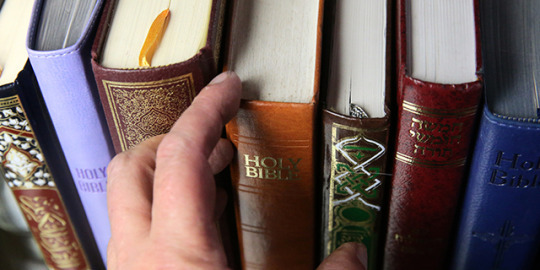
#religion#world religions#library#books#reference#long post#social justice#racism#theology#history#divinum-pacis
31 notes
·
View notes
Text
Saint John Maximovitch and That Most Awkward Halloween
Saint John (Maximovitch) Archbishop of Shanghai and San Francisco is best remembered for his gentleness, but when a certain serious incident aroused his sternness, he was up for the challenge.
"At the end of October, the Papists celebrate the feast of All Saints. There is a tradition that during the preceding night the dark spirits celebrated their own festival of disorder. In America, this "celebration" called Halloween has become an occasion on which children make mischief dressed in costumes of witches, devils, ghosts as if calling on the dark powers — a diabolic mockery of Christianity.
A group of Russians organized on this night a Halloween Ball. Meanwhile in the San Francisco Cathedral at this time was the All-night Vigil celebrated, and a significant number of people were absent, to the great sorrow of Vladika (an endearing Slavic term for a bishop). After the service, Vladika went to the place where the ball was still in progress. He climbed the steps and entered the hall, to the absolute astonishment of the participants. The music stopped and Vladika, in complete silence, glared at the dumbfounded people, slowly and deliberately making the round of the entire hall, staff in hand. He spoke not a word, and none was necessary; the mere sight of Vladika stung the conscience of all, as was evident from the general consternation. Vladika left in silence.
The next day in church he thundered his holy indignation and his flaming zeal calling all to the devout Christian life."
5 notes
·
View notes
Text

“Our grief over the death of our close ones would be inconsolable and boundless if the Lord had not given us eternal life. Our life would be meaningless if it ended with death. What benefit, then, would there be from virtue or good deeds? They would be right who say, “Let us eat and drink, for tomorrow we die!” But man was created for immortality.”
+ Saint John Maximovitch of Shanghai and San Francisco
48 notes
·
View notes
Text

The Evangelist Luke painted a number of images of Her, some together with the Pre-eternal Child, others without Him. When he brought them and showed them to the Most Holy Virgin, She approved them and said: "The grace of My Son shall be with them," and repeated the hymn She had once sung in the house of Elizabeth: "My soul doth magnify the Lord, and My spirit hath rejoiced in God My Saviour". - Saint John Maximovitch, The Orthodox Veneration of the Mother of God
26 notes
·
View notes
Text


"In 2018, Hieromonk Antipy of the Monastery of St. Sava, Ukraine, began to disassemble a case containing an icon of St John of Shanghai and San Francisco (June 19/ July 2), in order to make a new case. He was surprised to see that the image of the saint was completely imprinted on the glass. During the All-Night Vigil on March 17, 2018, Rector Met. Luke confirmed it as a miracle."
~Via Orthodox Faith on facebook
#miracles#Orthodox Christian#saints#St. John Maximovitch#St. John of Shanghai and San Francisco#Icons
9 notes
·
View notes
Text
Icon, Saints&Reading: Friday, August, 5, 2022
August 5_July 23
REPOSE OF ST JOHN CASSIAN THE ROMAN, ABBOT of MARSEILLES (435)
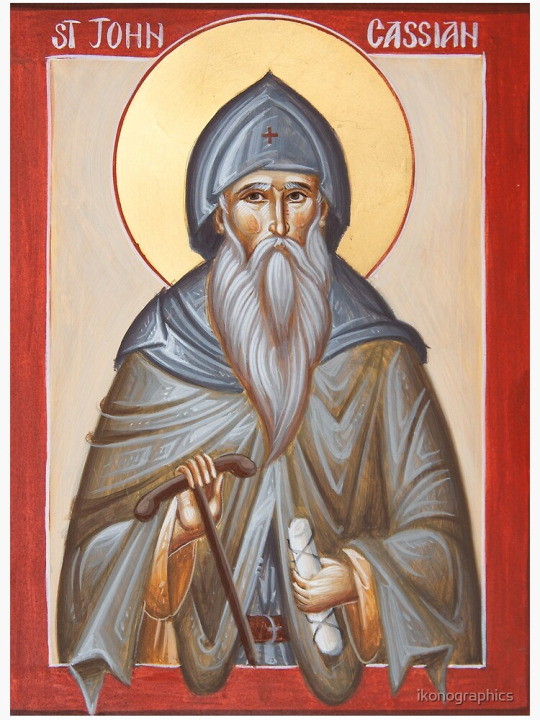
The Synaxarion calls him Our Father Cassian, chosen by God to bring the illumination of Eastern monasticism to the West. He was born in Scythia of noble parents, and was well educated in secular things. But, thirsting for perfection, he left all behind and travelled with his friend Germanus to the Holy Land, where he became a monk in Bethlehem. After becoming established in the monastic life for several years, St John felt a desire for greater perfection, and sought out the Fathers of the Egyptian Desert. He spent seven years in the Desert, learning from such Fathers as Moses, Serapion, Theonas, Isaac and Paphnutius. Through long struggles in his cell, St John developed from personal experience a divinely-inspired doctrine of spiritual combat. Many say that it was he who first listed the eight basic passions: gluttony, fornication, avarice, anger, sadness, acedia, vainglory and pride. In time, struggles in the Alexandrian Church made life so difficult for the Egyptian monks that St John (still accompanied by his friend Germanus), sought refuge in Constantinople, where they came under the care and protection of St John Chrysostom. When the holy Archbishop was exiled, St John once again fled, this time to Rome, where he came under the protection of Pope Innocent I. This proved to be providential for the Western Church, for it was St John who brought the treasures of Desert spirituality to the monasteries of the West. He founded the monastery of St Victor in Marseilles, then, at the request of his bishop, wrote the Cenobitic Institutions, in which he adapted the austere practices of the Egyptian Fathers to the conditions of life in Gaul. He went on to write his famous Conferences, which became the main channel by which the wisdom of the desert East was passed to the monastics of the West. Saint Benedict developed much of his Rule (which at one time governed most monasteries in the Latin world) from St John's Institutions and ordered that the Conferences be read in all monasteries. Saint John reposed in peace in 435, and has been venerated by the monks of the West as their Father and one of their wisest teachers. His relics are still venerated at the Abbey of St Victor in Marseilles.
Source: Celtic Saints
St John's writings were soon attacked by extreme Augustinians and, as Augustinianism became the official doctrine of the Latin Church, his veneration fell out of favour in the West. Outside the Orthodox Church, his commemoration is now limited to the diocese of Marseilles. http://www.abbamoses.com/months/february.html
St. John Maximovitch of Shanghai & San Francisco felt strongly about introducing Eastern Orthodox Christians to their local, pre-schism western saints. St. John Cassian, abbot of Marseille, France is one of these beloved saints who belong to the common heritage of the Eastern Orthodox Church and the Roman Catholic Church. The writing and wisdom of St John Cassian extend far beyond the French region of Marseille-Provence. In the years 417-419 he wrote 12 books entitled “De Institutis Coenobiorum” (“On the Directives of Coenobitic Life”) from his conversations with Palestinian and Egyptian monks, including 10 conversations with the desert fathers. These books provide his fellow countrymen with examples of life-in-common (cenobitic) monasteries and acquainted them with the spirit of the asceticism of the Orthodox East.
ICON: MOTHER OF GOD _JOY OF ALL SORROWS_ ST PETERSBURG (With coins)
We celebrate today...

The Icon of the Mother of God “Joy of All Who Sorrow” (With Coins) was glorified in the year 1888 in St. Petersburg, when during the time of a terrible thunderstorm lightning struck in a chapel. All was burned or singed, except for this icon of the Queen of Heaven. It was knocked to the floor, and the poor box broke open at the same time. Somehow, twelve small coins (half-kopeck pieces), became attached to the icon. A church was built in 1898 on the site of the chapel.
Source: Orthodox Church in America


MATTHEW 17:10-18
10 And His disciples asked Him, saying, "Why then do the scribes say that Elijah must come first?" 11 Jesus answered and said to them, "Indeed, Elijah is coming first and will restore all things. 12 But I say to you that Elijah has come already, and they did not know him but did to him whatever they wished. Likewise the Son of Man is also about to suffer at their hands. 13 Then the disciples understood that He spoke to them of John the Baptist. 14 And when they had come to the multitude, a man came to Him, kneeling down to Him and saying, 15 Lord, have mercy on my son, for he is an epileptic and suffers severely; for he often falls into the fire and often into the water. 16 So I brought him to Your disciples, but they could not cure him. 17 Then Jesus answered and said, "O faithless and perverse generation, how long shall I be with you? How long shall I bear with you? Bring him here to Me." 18 And Jesus rebuked the demon, and it came out of him; and the child was cured from that very hour.
1 CORINTHIANS 11:8-22
8 For man is not from woman, but woman from man. 9 Nor was man created for the woman, but woman for the man. 10 For this reason the woman ought to have a symbol of authority on her head, because of the angels. 11 Nevertheless, neither is man independent of woman, nor woman independent of man, in the Lord. 12 For as woman came from man, even so man also comes through woman; but all things are from God. 13 Judge among yourselves. Is it proper for a woman to pray to God with her head uncovered? 14 Does not even nature itself teach you that if a man has long hair, it is a dishonor to him? 15 But if a woman has long hair, it is a glory to her; for her hair is given to her for a covering. 16 But if anyone seems to be contentious, we have no such custom, nor do the churches of God. 17 Now in giving these instructions I do not praise you, since you come together not for the better but for the worse. 18 For first of all, when you come together as a church, I hear that there are divisions among you, and in part I believe it. 19 For there must also be factions among you, that those who are approved may be recognized among you. 20 Therefore when you come together in one place, it is not to eat the Lord's Supper. 21 For in eating, each one takes his own supper ahead of others; and one is hungry and another is drunk. 22 What! Do you not have houses to eat and drink in? Or do you despise the church of God and shame those who have nothing? What shall I say to you? Shall I praise you in this? I do not praise you.
#orthodoxy#orthodoxchristianity#easternchristianity#originofchristianity#spirituality#holyscriptures#gospel#bible#wisdom
7 notes
·
View notes
Photo

Bishop Jean-Nectaire (Kovalevsky) of Saint-Denis was the first hierarch of the Orthodox Church of France (1966-1970). He was glorified as a saint by the Orthodox Church of the Gauls on 12 October 2008, which celebrates his feast day on January 30.
Bp. Jean-Nectaire was born Evgraph Kovalevsky in St. Petersburg, Russia, on April 8, 1905. He was the brother of the deacon and musicologist Maxime Kovalevsky (1903-1988) and the historian Pierre Kovalevsky (1901-1979). He was co-founder with Vladimir Lossky of the Brotherhood of St. Photius (1925) and the St Denys Institute (1944). He was ordained a priest of the Moscow Patriarchate by Metropolitan Eleutherius (Bogoyavlenky) in 1937 Upon the death of Archimandrite Irénée (Louis-Charles) Winnaert, he was placed in charge of the newly formed Western Orthodox Church established by Metropolitan Sergius, the Patriarchal locum tenens of Moscow.
The Holy Synod of the Church of Russia conferred upon him the title Doctor of Divinity in 1952. In 1966, he was tonsured by Archbishop John Maximovitch, given the monastic name of Jean-Nectaire, consecrated bishop (with the assistance Theophilus (Ionescu) of Sèvres), and installed as the first Bishop of Saint-Denis in the modern era, making him the hierarch of the Western Rite diocese now known as the Orthodox Church of France. He reposed on January 30, 1970.
1 note
·
View note
Photo

Today we celebrate the memory of the Holy Hierarch John Maximovitch, Archbishop of Shanghai and San Fransisco (+1966). Saint John was a recent Russian Saint who through his humility, love and foolishness for Christ, was able to attain the state of sainthood in these latter times. He was also one of the main catalysts in establishing the Western Rite Orthodox Church in the United States of America. May he intercede for us all + #saint #john #saintjohn #maximovitch #archbishop #johnmaximovitch #shanghai #china #sanfransisco #usa #america #love #humility #fool #foolforchrist #christ #jesus #jesuschrist #orthodox #saintoftheday (at San Francisco, California) https://www.instagram.com/p/CCHu6m4pnBS/?igshid=ifm8bc6al472
#saint#john#saintjohn#maximovitch#archbishop#johnmaximovitch#shanghai#china#sanfransisco#usa#america#love#humility#fool#foolforchrist#christ#jesus#jesuschrist#orthodox#saintoftheday
11 notes
·
View notes